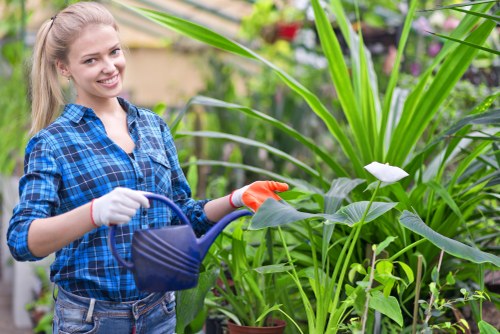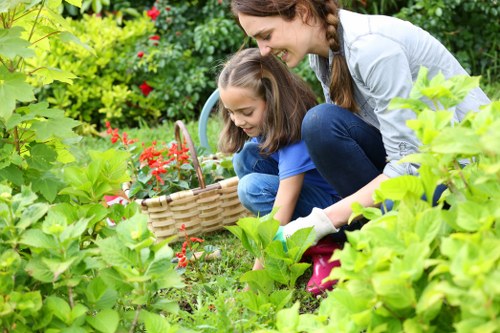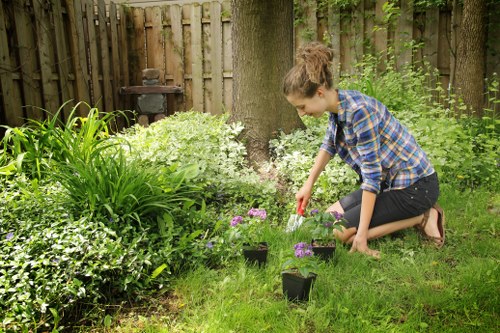Gardeners Gipsy Hill

Gardeners Gipsy Hill stands as a unique blend of tradition, community, and eco-friendly gardening practices. Nestled in a vibrant locale, this area is not only celebrated for its lush landscapes but also for its rich history of gardening expertise. Over the years, Gardeners Gipsy Hill has evolved into a hub for horticulturists, local enthusiasts, and green thumbs who work tirelessly to maintain its natural beauty.
Situated within a community that cherishes nature and sustainability, Gardeners Gipsy Hill represents more than just well-tended plants; it embodies a way of life where nature and humankind coexist harmoniously. Residents and visitors alike express a deep sense of pride in the local gardening efforts that continuously revitalize the neighborhood. The care, attention, and passion invested in every garden accentuate the area’s charm, making it a beacon of environmental stewardship and creative landscaping.
In this article, we will explore the deep roots and ongoing influence of Gardeners Gipsy Hill. We will journey through its historical significance, community-led initiatives, and innovative sustainable practices. Whether you are a professional horticulturist or simply someone who enjoys the beauty of well-cultivated gardens, your interest in Gipsy Hill will be enriched by the detailed stories and insights that are woven throughout the landscape.

A Brief History of Gipsy Hill
The history of Gipsy Hill is steeped in tradition, reflecting a long legacy of gardening and landscape design. Over the decades, generations of gardeners have nurtured this area, turning barren spaces into thriving gardens that tell the story of perseverance and communal passion. Early settlers recognized the potential of the land and invested in creating greenery that provided both beauty and calm. Their dedication laid the foundation for what is now a celebrated hub for sustainable gardening.
During the early twentieth century, Gipsy Hill experienced a renaissance in urban gardening. Local horticulturists began experimenting with innovative techniques that bridged traditional practices with modern ideas. This blend of old and new is still visible today. Gardeners at Gipsy Hill honor the legacy of those early pioneers by implementing methods that respect historical traditions while embracing contemporary eco-friendly innovations. Their work creates a living tapestry of past and present.
Today, the historical significance of Gipsy Hill is evident in every meticulously tended bed and every community garden that lines its streets. The gardens serve not only as a source of local pride but also as a living museum of gardening evolution. Through rich soil and spirited cultivation, the history of the area comes to life, reminding all who visit that every plant has a story to tell. The preservation of these gardens is a tribute to the dedication of the countless gardeners who have shaped this community over the years.

Understanding the Gardeners' Impact
The modern-day influence of Gardeners Gipsy Hill lies in their innovative approach to community gardening and sustainable landscaping. With environmental concerns growing globally, local experts have taken it upon themselves to implement practices that are both practical and ecologically sound. These gardeners are not just planting flowers; they are cultivating a legacy of green innovation and environmental responsibility. This holistic approach has had a positive ripple effect on the local ecosystem and community spirit.
Community members actively participate in initiatives such as composting drives, water conservation workshops, and urban farming projects, which have become synonymous with Gipsy Hill. These efforts have created a tightly knit network of environmentally conscious residents committed to nurturing not only their gardens but also the community’s future. The integration of sustainable techniques and community-driven projects underlines the importance of mutual support and shared objectives. Every seed planted is a symbol of hope and progress.
In addition, local schools and organizations collaborate with the gardeners, creating educational programs that teach the principles of organic farming and sustainable living. This hands-on approach ensures that future generations inherit a rich tradition of environmental mindfulness. Through mentorship programs and community workshops, the accumulated wisdom of experienced gardeners is passed on, ensuring that Gipsy Hill’s vibrant culture continues to flourish. It is this spirit of collaboration and care that propels the Gardeners Gipsy Hill community forward.

Modern Gardening Practices and Sustainability
The landscape of Gardeners Gipsy Hill has seen dramatic transformations with the advent of modern horticultural practices. Today, eco-friendly methods have become an integral part of the gardening process. From organic fertilizers to water-saving irrigation systems, modern gardeners at Gipsy Hill are at the forefront of sustainable agricultural practices. These innovative methods ensure that the local environment is protected even as the gardens thrive with life.
Local experts now focus on reducing the use of chemical pesticides and instead opt for natural pest-control methods. By integrating native plant species and beneficial insects into the ecosystem, Gardeners Gipsy Hill has managed to create a resilient environment that supports biodiversity. This approach not only helps in maintaining the integrity of the gardens but also contributes significantly to local ecological health. Innovative techniques such as vertical gardening and permaculture are increasingly popular in accommodating the urban space constraints while still prioritizing green space.
Furthermore, energy-efficient greenhouse designs and rainwater harvesting systems have become a norm. The local gardening community emphasizes structure, research, and the use of renewable energy sources to further their sustainable practices. These resources have made it possible for the gardeners to experiment and implement eco-solutions that span from small-scale community gardens to larger public park projects. Emphasis on sustainability has truly transformed Gipsy Hill into a living lab for eco-friendly innovations, ensuring a healthier future for both the environment and the community.

Local Areas Enhancing the Gipsy Hill Experience
Gipsy Hill is surrounded by a variety of local areas that contribute to its dynamic gardening culture. Each neighboring district offers its own charm and unique contributions to the overall community’s well-being. By working together, these areas establish a network of support that enriches local gardening efforts. Below is an ordered list of some of the closest areas and a brief description of their significance:
- Tulse Hill – Located just a short distance away, Tulse Hill boasts a mixture of residential gardens and community parks.
- Denmark Hill – Known for its historical buildings and vibrant local markets, Denmark Hill offers a picturesque setting for urban gardening enthusiasts.
- West Dulwich – Renowned for its charming residential areas and well-maintained green spaces, West Dulwich adds a suburban touch to the overall landscape.
- Herne Hill – A cultural hotspot with bustling community gardens, Herne Hill influences many local gardening projects.
- Brockwell – Home to the famous Brockwell Park, this area provides ample inspiration for innovative garden designs.
- East Dulwich – With a mix of modern urban development and traditional gardens, East Dulwich bridges the gap between old and new.
- Camberwell – Camberwell is known for its creative art installations that often incorporate natural elements from the garden.
- Peckham – A vibrant area with a growing community garden scene that shares close ties with Gipsy Hill.
- Brixton – This bustling neighborhood offers a melting pot of cultures, each contributing uniquely to local gardening practices.
- Walworth – Known for its historical significance and community spirit, Walworth has deep connections to local horticultural traditions.
- Dulwich Village – A quaint and historic area that exemplifies the blend of modern practices with traditional values in gardening.
- Sydenham – With its artistic vibe and eco-conscious community, Sydenham reinforces sustainable gardening ideals.
- Crystal Palace – Noted for its vast green spaces and scenic beauty, Crystal Palace serves as an inspiration for urban gardeners.
- Honor Oak – This relatively tranquil area offers quiet retreats and a focus on organic gardening techniques.
- Forest Hill – Forest Hill is recognized for its strong community ties and efforts in preserving local biodiversity.
The synergy between Gardeners Gipsy Hill and these neighboring areas has led to a vibrant web of knowledge exchange and collaborative initiatives. Community events are often co-hosted, allowing residents across these districts to share resources, ideas, and innovative gardening solutions. Each area brings distinctive traits that, when combined, form a resilient and adaptive local ecosystem. The interconnectivity among these zones reinforces the idea that sustainable gardening practices are most effective when supported by a unified community effort.
Frequently Asked Questions
What makes Gardeners Gipsy Hill unique?
Gardeners Gipsy Hill is distinguished by its deep-rooted history, innovative sustainable practices, and the passionate community that comes together to maintain its beauty. It is a blend of historical tradition and modern eco-friendly techniques.
How do local areas contribute to the Gardeners Gipsy Hill community?
Neighboring areas such as Tulse Hill, Denmark Hill, and West Dulwich share resources, host collaborative events, and nurture a symbiotic relationship with Gipsy Hill. This partnership helps spread eco-friendly gardening practices throughout the region.
What kind of sustainable practices are used in Gipsy Hill gardens?
The community employs organic fertilizers, natural pest control methods, water-saving irrigation systems, and even rainwater harvesting. These measures help conserve resources and create healthy, flourishing gardens.
Can visitors participate in community gardening events?
Absolutely. Gardeners Gipsy Hill regularly hosts workshops and community events. Visitors and residents are warmly welcomed to join these events, learn new techniques, and contribute to the ongoing sustainability efforts.
Where can I learn more about eco-friendly gardening techniques?
Local libraries, community centers, and several online platforms offer resources on sustainable gardening. Additionally, many community-run workshops in the Gipsy Hill area focus on eco-friendly and organic practices, providing hands-on experience in sustainable gardening.